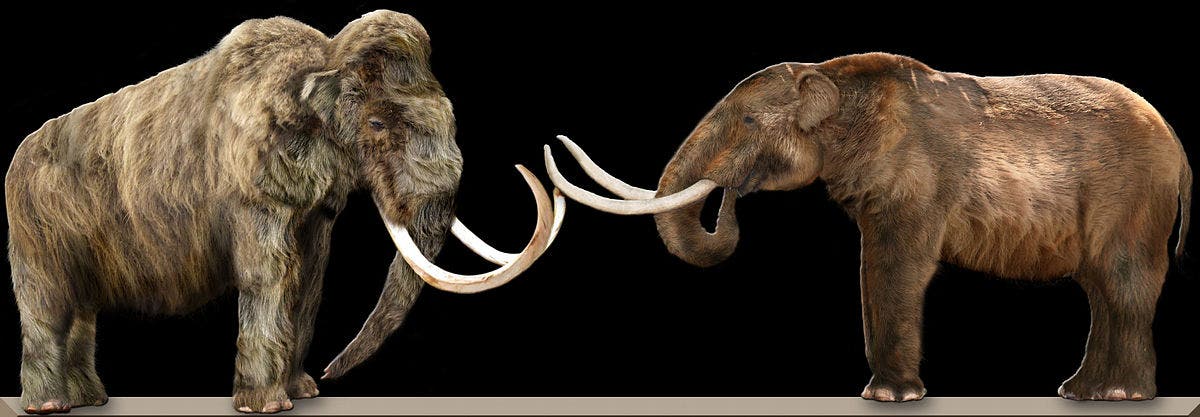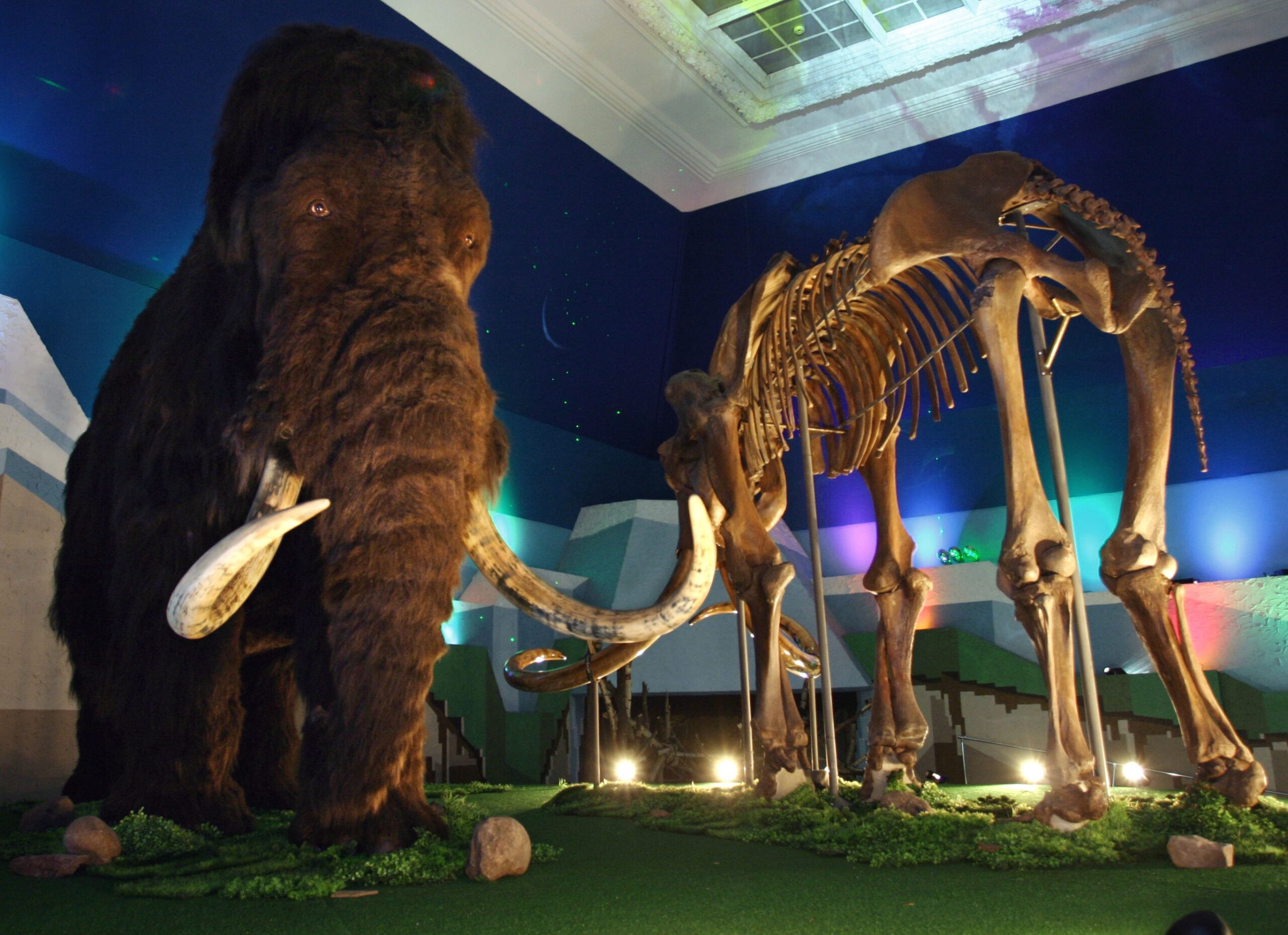
ABOUT MAMMOTH
During the last Ice Age, there were many large, interesting mammals, like the saber-toothed cats, giant ground sloths, woolly rhinos, mastodons, and mammoths. These animals have long since gone extinct and are known mostly from fossils, from frozen, mummified carcasses, and even from ancient cave drawings.
Mammoths (genus Mammuthus) are extinct elephant-like animals that were adapted to cold weather. These herbivores (plant-eaters) had long, dense hair and underfur, large ears (but much smaller than modern-day elephants), a long proboscis (nose), and long tusks. Both the males and the females had tusks; the tusks were really incisor teeth.
Mammoths lived from about 2 million years ago to 9,000 years ago, during the last ice age (the Pleistocene Epoch). This was millions of years after the dinosaurs went extinct. These huge mammals lived throughout the world.
The various mammoths ranged in size from about 9 ft (2.7 m) tall to over 15 ft (4.5 m) tall. Some species had tusks that were straight, some had tusks that were curved. The longest tusks were over 17 feet (45.2 m) long. The tusks were used in mating rituals, for protection, and for digging in the snow for food.
The Woolly Mammoth
Woolly Mammoths (scientific name Mammuthus primigenius) are extinct herbivorous mammals. These mammoths lived in the tundras of Asia, Europe, and North America. They are closely related to modern-day Indian elephants.
When they lived: Woolly Mammoths lived from the Pleistocene to the early Holocene epoch (from about 120,000 to 4,000 years ago), millions of years after the dinosaurs went extinct. People existed during the time of the mammoths. Cave paintings of the woolly mammoth have been found in France and Spain.
Anatomy and tusks: Woolly Mammoths had long, dense, dark black hair and underfur, long, curved tusks, a fatty hump, a long proboscis (nose), and large ears. They were about 11.5 feet (3.5 m) long, 9.5 feet (2.9 m) tall at the shoulder and weighed about 3 tons (2.75 tonnes). The tusks were used for protection, in interspecies dominance, and for digging in the snow of the ice ages for grass and other food. (Classification: Family Elephantidae)
Extinction: The Woolly Mammoth probably went extinct because it couldn’t adapt to the combined pressures of the climatic warming that occured when the Ice Age ended, together with predation from humans.

